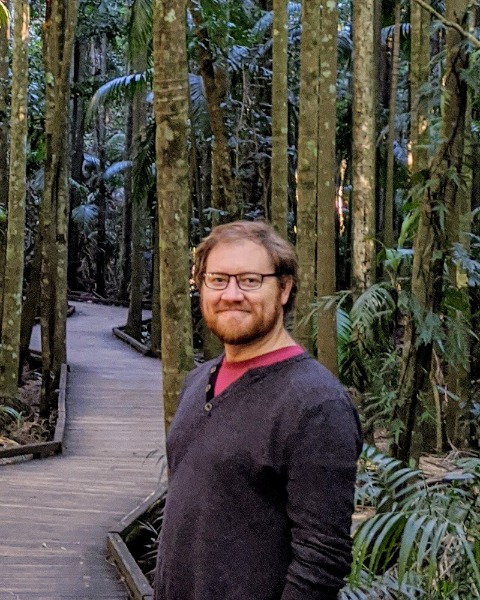Plant-Insect Ecosystems
10-Minute Paper
Genetic background of Lygodium microphyllum ferns in Florida is associated with galling success in the mite agent Floracarus perrepae

Dean Brookes
Research Scientist
Commonwealth Scientific and Industrial Research Organisation
Brisbane, Queensland, Australia- JM
Jeff Makinson
Commonwealth Scientific and Industrial Research Organisation
Brisbane, Queensland, Australia 
Matthew F. Purcell (he/him/his)
Director
CSIRO Health and Biosecurity
Brisbane, Queensland, Australia- GM
Graham McCulloch
University of Otago
Dunedin, Otago, New Zealand - EL
Ellen Lake
USDA-ARS
Davie, Florida
Presenting Author(s)
Co-Author(s)
The Old World climbing fern Lygodium microphyllum was first reported in Florida in the 1960s and has since spread across much of the state. In 2008, release of the Australian leaflet galling mite Floracarus perrepae began to control the fern, though its establishment and impact varied considerably across sites and across individual plants in experimental tests. To determine whether genetic differences among host plants accounts for the variance in mite galling, restriction-site associated DNA sequencing (RADSeq) was used to characterise the genetic structure of L. microphyllum from galled and ungalled populations in Florida. We found evidence of two invasive lineages of L. microphyllum in Florida, one associated with susceptibility to mite galling and the other with resistance. Admixture has occurred between the two lineages post-invasion, and consequently, the susceptibility of individual ferns to mite galling is now uncertain. These results refocus the efforts of the L. microphyllum biocontrol program, as native range surveys, agent host testing, agent releases and program success must consider biological differences between the two L. microphyllum lineages, as well as the uncertainty presented by admixed individuals.

